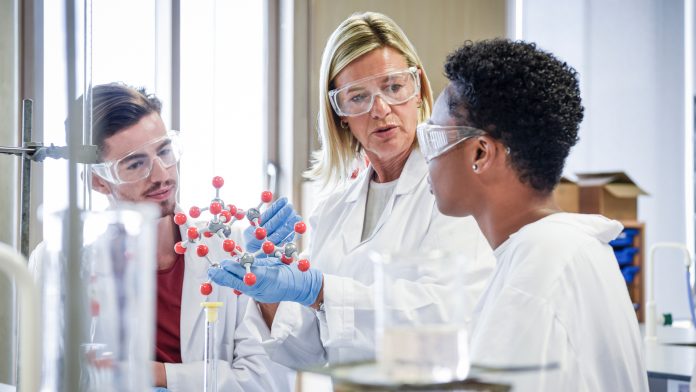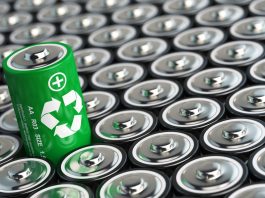Researchers from the University of Oslo are developing environmentally friendly batteries with improved technology for the renewable energy transition.
As the world is being electrified, we have become increasingly dependent on more environmentally friendly batteries. The abundance of new technology designed in recent decades would not have been possible without them, with the majority of ship traffic and car fleet being increasingly powered by electricity. Batteries could be the next big Norwegian industrial adventure, according to the Confederation of Norwegian Enterprise (NHO).
At least four huge battery factories are being planned in Norway, with more than thirty residing in Europe. The main products being manufactured are Lithium-ion batteries, a technology that first originated in 1991, and which has been a critical prerequisite for all the small electronics and the electrics cars that we are increasingly starting to rely on.
The size of the batteries is important when manufacturing them. “In the consumer market, there is a continuous pursuit of making batteries smaller and more efficient,” explained Vebjørn Bakken, director of UiO:Energy. Associate Professor Alexey Koposov at the Department of Chemistry added, “You want to have space in your car. You want the car to carry not only the battery, but you and your family as well.”
Research is being conducted worldwide to produce lithium batteries that are even safer and more environmentally friendly. Many are looking for other solutions and new battery technologies that could become the new future market leading battery. They have much more in mind than gadgets and everyday electronics for their uses.
“What’s coming now are really big battery systems connected to the electrical grid. Size and weight are then no longer critical. The important factor is as much capacity as possible,” said Bakken. This is closely related to the focus on renewable energy from the sun, wind and other sources. “Sun and wind give intermittent energy production depending on time, season and the weather. This leads to an increasing need for energy storage,” he added.
Creating batteries is not all about chemistry
“I think the battery research is one of the fields developing the fastest right now. Particularly when it comes down to chemistry,” said Koposov. Despite chemistry being a very large part of creating a battery, there are other external factors that could be argued as just as, if not more important.
The manufacturing of batteries relies on dedicated materials but obtaining them includes processes other than just chemistry. While the battery is a system that is based on chemical principles, it also takes great engineering work to build them and make them safe.
Lithium shortage fears
There are concerns that there will eventually be a shortage of lithium, which will prevent the production of lithium batteries. “What can at least happen is that the price of lithium goes up because huge factories are being built all over Europe,” explained Koposov.
Another dilemma that has received a lot of attention is the use of cobalt in electric car batteries. Much of the cobalt originates from the Democratic Republic of Congo, and this extraction has been criticised by both human rights and environmental organisations.
Therefore, research is being conducted to replace lithium with sodium or other elements. “Sodium is a material we can easily obtain in Europe. The desire to make batteries more sustainable is one of the driving forces behind this development,” added Koposov.
From lithium to sodium
Sodium is located just below lithium in the column on the far left on the periodic table. That means they have properties similar to each other. However it is not as simple as removing lithium and using sodium instead.
“The anode in lithium-ion batteries is almost always made of graphite, but it doesn’t work at all for sodium,” said Doctoral Research Fellow Anders Brennhagen.
In a lithium battery, the lithium ions settle between the layers of the crystal structure of graphite without any major changes in the structure itself. Brennhagen works with sodium batteries and must use materials other than graphite in the anode. The challenge is that these materials change their structure when receiving the ions.
“My materials can absorb much more sodium ions and therefore have a much higher capacity, but since there are such large changes in the structure of the material, it is difficult to get the capacity to be stable over many cycles of charging and discharging,” said Brennhagen.
In his PhD, he hopes to get closer to a solution. If he succeeds, the rewards can be excellent.
Cheaper and more environmentally friendly batteries
“Sodium-ion batteries can become a more environmentally friendly alternative to lithium-ion batteries. They can also become cheaper and more sustainable,” said Brennhagen.
Sodium is a more easily obtainable material is it is found everywhere, and the Earth’s crust contains over 1000 times more sodium that lithium. Because of this you would no longer remain dependent on the few countries that have an abundance of lithium. Sodium will probably not replace lithium, but sodium batteries may have their advantages in certain applications.
“Lithium-ion batteries will in all likelihood always have higher energy density than sodium-ion batteries, but you may not always need the very best,” explained Brennhagen. “Sometimes price has a lot more to say, and then sodium-ion batteries can be better. For now, lithium-ion batteries are so cheap, and that technology is well developed, so it’s easier to go for it”.
At the same time, the sodium battery technology has come far enough to be ready if the opportunity arises. “If anyone wants to make an industry with sodium-ion batteries now, it can be done. There are already prototypes of well-functioning sodium-ion batteries, yet it requires a lot of investment in both material and battery production for it to be able to compete with lithium-ion batteries,” said Brennhagen. “The materials I work with are still at an early stage of research. It will at least take ten years before it is on the market,” Brennhagen explained.
Calcium – double charge
Returning to the periodic table, calcium lies in the column to the right of lithium and sodium. “There is more than enough calcium in the world, so there is certainly no problem with access to materials. Calcium is also a well-known substance,” added Vebjørn Bakken. The chemists have had several reasons to take a closer look at calcium as they search for new battery technologies.
“The great advantage of calcium is that for each atom, two charges are moved. With lithium and sodium, there is only one. The problem with calcium is that the chemistry becomes more complicated. The chemistry changes a little bit, and this little bit is enough for us to need to reassess all these processes that are taking place,” said Alexey Koposov.
“Calcium is also much less dangerous than lithium and sodium. Calcium is not explosive,” added researcher Carmen Cavallo of the Centre for Materials Science and Nanotechnology.
Her challenge is to build a complete battery with anode, cathode and electrolyte. The first step is an anode that works with calcium.
“Calcium is slightly larger, heavier and slower than lithium and sodium. The biggest problem, therefore, is moving calcium back and forth between anode and cathode,” said Cavallo.
Norwegian silicon
To make the process easier, Cavallo can mix calcium with other substances. There are several candidates, but she is choosing silicon. “I will make a silicon-calcium alloy to solve the slow movement of the calcium ions and further reduce the costs. Norway delivers one of the best raw silicon materials. It makes the whole process cheaper,” said Cavallo.
“This technology is at a very early stage and for now it is fundamental basic research. I hope to have a prototype by the end of next year, but a complete battery will not be ready until 2024 at the earliest,” Cavallo explained.
Despite it being a long road before it infiltrates the battery market, Cavallo comforts herself that decades of research was conducted on lithium-ion batteries before they were utilised on a mass scale. She imagines that calcium batteries can be useful for many technologies, especially for marine applications.
“Calcium batteries can store twice as much electricity as lithium and sodium, so I primarily aim to use them for big devices,” said Cavallo.
Solid-state batteries
Cavallo wants to replace the liquid electrolyte with a solid one. This will improve the safety of the calcium batteries. “Current lithium-ion batteries have flammable electrolytes. I think most electric car manufacturers would prefer lithium batteries in a solid form,” said Alexey Koposov.
“Liquid electrolytes cannot withstand contact with air. If a battery accidentally cracks or breaks, the electrolyte could catch fire,” Cavallo added.
PhD candidate Carina Geiss at the Department of Chemistry is working on finding a solid form of electrolyte. “I think we can get pretty close to what’s possible in a liquid electrolyte, and that’s good enough,” Geiss said. For this, she makes use of compounds called polymers. These are chemical compounds consisting of chain-shaped molecules and they are the main component of plastic products.
“My polymer electrolyte looks like a thin membrane, but when you take a closer look at it, it consists of different polymer chains,” said Geiss. When heated, or after adding the correct ingredients to the material, these chains start to move. As they move, small pockets appear between them where the ions can stay.
“When the polymer chain moves, it constantly creates new voids, new pockets where an ion would rather be, and thus it jumps. The more the chains moves, the more they encourage the ions to jump,” said Geiss. To make this as efficient as possible, she intends to make a battery sandwich by pressing together the anode and cathode, with the electrolyte melted in between.
Some car manufacturers have said that solid-state batteries could be seen in electric cars as early as 2025 if everything goes according to plan. When the solid battery comes with full force into the market, the world will no longer be the same.
Due to the dangers associated with liquid electrolytes, today’s batteries must be packed well when used in cars for example. Thus, they take up more space, and they weigh more. “The great advantage of solid electrolyte is that the battery cannot leak. They are not explosive. They are much safer, and you can save both space and weight in the electric car,” Geiss explained.
Contributing to a more sustainable world
The world needs more efficient and environmentally friendly batteries. For Carina Geiss, Carmen Cavallo and Anders Brennhagen, this is part of the motivation for enduring the meticulous work in the laboratory.
As with all research at such a fundamental level, where they have to zoom in on the very smallest details of the chemical processes, coming up with new products is not done in an instant.
“We still have a long way to go, but it’s exciting to be involved in driving the development towards better, greener and more sustainable batteries,” concluded Geiss.









